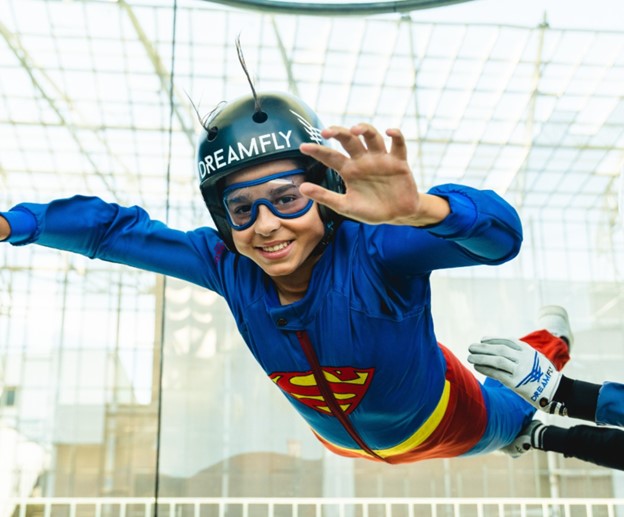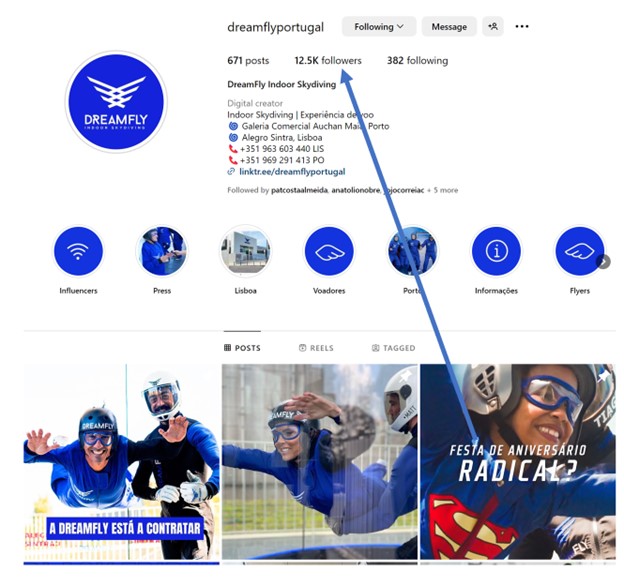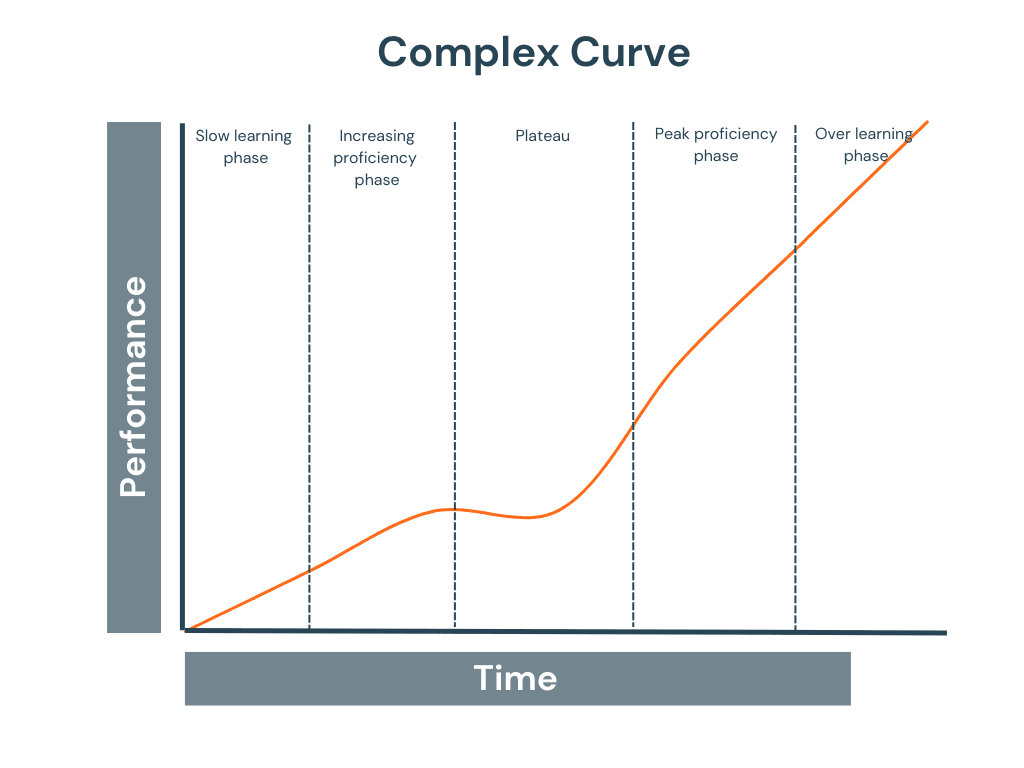6 min to read
Introduction: Overview of DreamFLY
DreamFLY, based in Portugal, revolutionized the indoor skydiving experience, making the thrill of flying accessible to everyone. Targeting a B2C market, DreamFLY's digital launch focused on engaging potential customers through performance media, leveraging the excitement and accessibility of indoor skydiving.
Objectives and Challenges
- Increase Online Bookings: The primary objective was to boost online bookings for DreamFLY's indoor skydiving experiences. This involved not only attracting new customers but also encouraging repeat visits and referrals.
- Enhance Brand Awareness and Perception: DreamFLY aimed to establish itself as a leading choice for indoor skydiving experiences in Portugal. This entailed building a strong brand presence that resonated with a wide audience, including those unfamiliar with skydiving.
-
Market Penetration and Expansion: Breaking into new market segments and demographics, including families, adventure enthusiasts, and individuals looking for unique experiences.
-
Customer Engagement and Retention: Developing strategies to engage customers through personalized experiences and maintaining long-term relationships through loyalty programs and continuous engagement.

Challenges
- Differentiating in a Competitive Market: The leisure and adventure industry is crowded with various options. DreamFLY needed to differentiate its offering and convey the unique thrill of indoor skydiving effectively.
- Reaching a Broad Audience: The challenge lay in appealing not just to sports enthusiasts but to a wider demographic, including those who had never considered skydiving.
-
Digital Marketing Optimization: Utilizing the right mix of digital channels and content to reach and engage the target audience effectively. This includes overcoming the complexities of programmatic media and managing various digital platforms efficiently.
-
Measuring and Analyzing Performance: Implementing robust analytics to track the performance of marketing campaigns and understanding customer behavior to optimize strategies continuously.
-
Customer Education: Overcoming misconceptions about skydiving and educating potential customers about the safety, ease, and enjoyment of the indoor experience.
-
Sustaining Interest Post-Launch: Ensuring that the initial launch excitement translates into long-term interest and sustained business growth.
By addressing these objectives and overcoming the challenges, DreamFLY aimed to solidify its position in the market and achieve substantial growth in online bookings and brand recognition. The use of advanced digital marketing solutions, analytics, and a well-crafted performance media strategy were key in navigating these challenges and achieving the set objectives.

Strategy and Execution
The strategy and implementation was iterative as goals progressed and our goals became more ambitious!
-
Audience Segmentation and Targeting: DreamFLY identified key audience segments, including adventure enthusiasts, families, young professionals, and tourists. Each segment was targeted with tailored messaging and offers to maximize relevance and engagement.
-
Integrated Digital Marketing Channels:
- SEO: Optimized website content for search engines to attract organic traffic with a focus on keywords related to adventure sports and family entertainment.
- Social Media Marketing: Leveraged platforms like Instagram, Facebook, and TikTok to showcase exhilarating skydiving experiences through engaging visuals and user-generated content.
- Pay-Per-Click (PPC) Advertising: Implemented targeted PPC campaigns on Google Ads and social media to capture high-intent users.
- Programmatic Media: Utilized programmatic advertising to reach audiences on various websites and platforms through automated, data-driven ad placements.
-
Content Strategy:
- Engaging Storytelling: Developed a narrative around the excitement and accessibility of indoor skydiving, making it appealing to a broad audience.
- Video Content: Produced high-quality videos showcasing the indoor skydiving experience, emphasizing safety, fun, and the unique thrill of flying.
- User-Generated Content: Encouraged customers to share their experiences on social media, enhancing credibility and organic reach.
-
Technology and Analytics:
- Website Optimization: Implemented a user-friendly website design with clear calls-to-action and an easy booking process.
- Data Analytics: Used advanced analytics tools to track user behavior, campaign performance, and to refine marketing strategies.

Execution
-
Launch Campaign: Initiated a multi-channel marketing campaign coinciding with the launch, creating buzz and excitement across digital platforms.
-
Influencer Partnerships: Collaborated with influencers and adventure sports enthusiasts to reach wider audiences and build trust through authentic endorsements.
-
Seasonal Promotions and Offers: Rolled out special offers during peak holiday seasons and local festivals to attract families and tourists.
-
Customer Feedback Loop: Established mechanisms for collecting and analyzing customer feedback, enabling continuous improvement of the experience and marketing strategies.
-
Continuous Optimization: Regularly reviewed campaign performance data, adjusting strategies as needed to improve reach, engagement, and conversion rates.
-
Retargeting Campaigns: Implemented retargeting strategies to re-engage visitors who showed interest but did not make a booking.
By executing these strategies, DreamFLY aimed to create a strong digital presence, driving increased online bookings and brand engagement. The focus on a diversified digital approach, combined with robust analytics and continuous optimization, was crucial in achieving the desired outcomes.

Online Bookings: Increased by 105% within a year.
Quantitative Achievements
- 105% Increase in Online Bookings: Within a year of the digital campaign launch, DreamFLY experienced a remarkable 105% increase in online bookings, surpassing initial expectations. This was a clear indicator of the effective reach and conversion power of the digital strategies employed.
- Website Traffic Growth: There was a significant surge in website traffic, with metrics showing an increase in both new and returning visitors. This growth was attributed to successful SEO strategies, compelling content, and targeted advertising.
-
Social Media Engagement: DreamFLY saw a substantial rise in social media engagement, including likes, shares, comments, and followers. This was a result of engaging content, effective use of influencers, and interactive campaigns.
-
Conversion Rate Improvement: The conversion rate from visits to bookings saw an uptick, indicating that the website optimization and targeted marketing efforts were effective in guiding visitors through the customer journey.
Qualitative Achievements
- Brand Awareness and Perception: DreamFLY's brand became synonymous with accessible and thrilling indoor skydiving experiences. The brand saw increased recognition, not just among adventure enthusiasts but also in the wider public.
- Customer Satisfaction and Feedback: Positive customer reviews and feedback highlighted the success of the experience, contributing to the brand's reputation and word-of-mouth referrals.
-
Market Positioning: DreamFLY established itself as a leader in the indoor skydiving market in Portugal, setting a benchmark for experience and customer engagement in the sector.
Long-Term Business Impact
- Customer Loyalty and Retention: The effective use of loyalty programs and continuous engagement strategies helped in building a base of returning customers, essential for long-term business sustainability.
- Data-Driven Insights for Future Strategies: The extensive use of analytics provided valuable insights into customer behavior and preferences, shaping the foundation for future marketing strategies and business decisions.
-
Expansion Opportunities: The success of the digital launch opened avenues for potential expansion, both in terms of geographic reach and diversification of offerings
-
Brand Awareness: Significantly enhanced, with a notable rise in social media engagement and website traffic.

Internal Analysis of Success - Quick learners
Effective Digital Marketing Mix
- Multi-Channel Approach: DreamFLY’s success can be attributed to its comprehensive use of various digital channels. The combination of SEO, PPC, social media marketing, and programmatic media created a robust online presence, reaching a wide and diverse audience.
- Optimal Use of Content: The engaging and high-quality content, especially videos and user-generated content, played a pivotal role in capturing the audience's attention and driving engagement.
-
Data-Driven PPC Campaigns: The targeted PPC campaigns were effective in capturing high-intent users, as evidenced by the increased conversion rates and online bookings.
Strategic Audience Targeting and Engagement
- Tailored Messaging: DreamFLY’s ability to craft messages that resonated with different audience segments, from families to thrill-seekers, was key in broadening its appeal beyond traditional skydiving enthusiasts.
- Influencer Marketing: Collaborations with influencers significantly boosted DreamFLY's credibility and reach, particularly among younger demographics.
-
Customer Engagement: Continuous engagement through social media and email marketing kept the audience connected and interested, contributing to customer loyalty and repeat business.
Leveraging Advanced Analytics
- Customer Insights: The use of advanced analytics tools provided deep insights into customer behavior and preferences, allowing for more targeted and effective marketing strategies.
- Performance Monitoring: Regular monitoring and analysis of campaign performance data helped in making informed adjustments to maximize ROI.
-
Website Optimization: Analysis of website user data led to continuous improvements in user experience and conversion funnel optimization.
Brand Positioning and Market Penetration
- Building a Strong Brand Image: The consistent messaging and high-quality experiences helped in creating a strong and appealing brand image.
- Market Penetration: DreamFLY successfully penetrated the market by appealing to a wider demographic, thereby expanding its customer base.
Overcoming Challenges
- Differentiation in a Competitive Market: DreamFLY’s unique selling propositions were effectively highlighted, distinguishing it from competitors.
- Educating Customers: The informative and engaging content helped in overcoming misconceptions about skydiving, educating potential customers about the safety and enjoyment of the indoor experience.
Sustained Growth and Innovation
- Future-Ready Approach: DreamFLY’s focus on continuous innovation and adaptation to market trends indicates a strong foundation for sustained growth.
- Expansion Potential: The success of the digital launch has set the stage for potential expansion into new markets and offerings.
Future Considerations and AI Impact
- Expansion of Digital Reach: Exploring emerging digital channels and technologies to stay ahead.
- Personalization: Using AI to offer personalized customer experiences and recommendations.
- Predictive Analytics: AI-driven analytics for better understanding customer preferences and optimizing future campaigns.
Conclusion
DreamFLY's digital launch is a testament to the power of well-executed digital marketing strategies in the B2C sector. By embracing innovative marketing approaches and leveraging data analytics, DreamFLY not only enhanced its online presence but also significantly boosted its business outcomes.
For further insights on digital marketing strategies and data analytics, explore these articles from Codedesign.org



Add comment ×